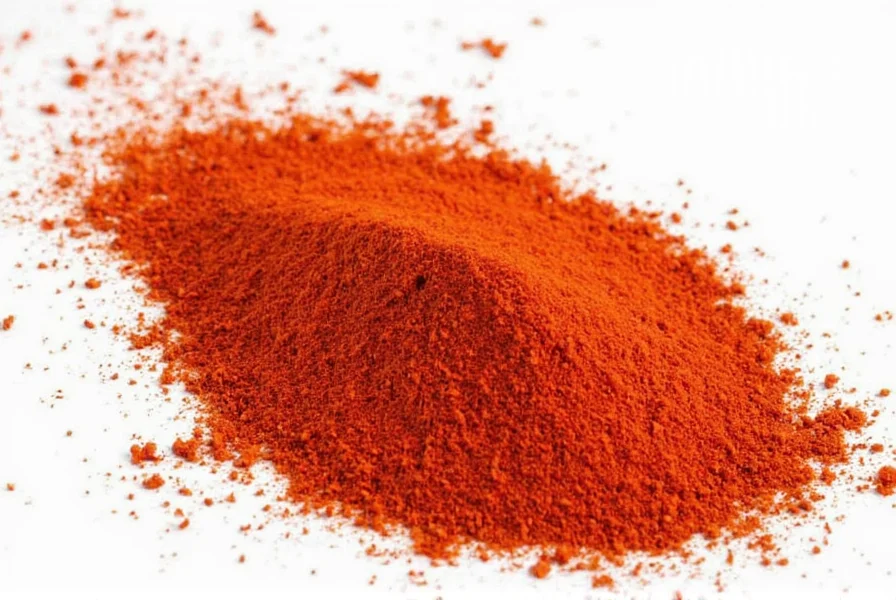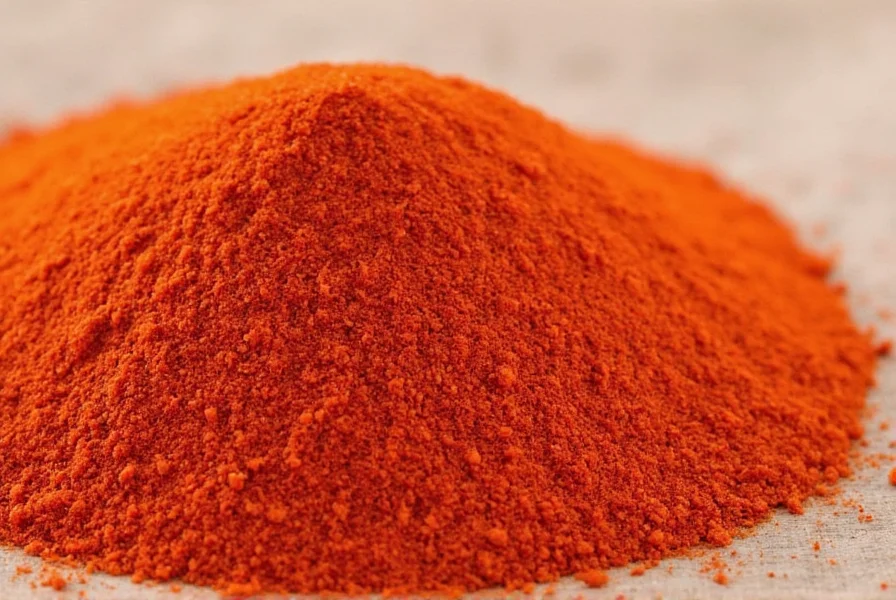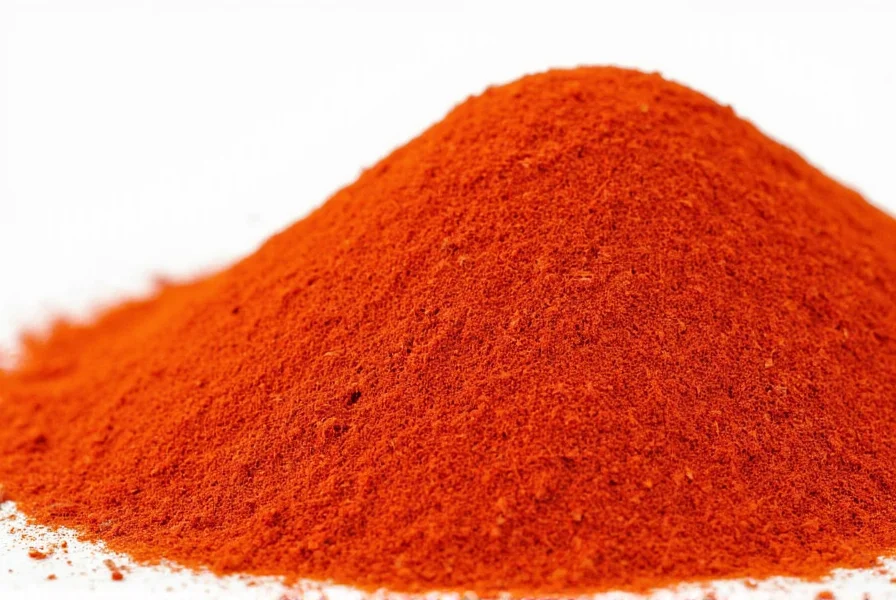Understanding ground cayenne pepper begins with recognizing its origin. This vibrant red spice comes from grinding dried cayenne peppers, a specific variety of Capsicum annuum that grows primarily in Central and South America, Africa, and parts of Asia. Unlike generic "red pepper flakes" which may contain multiple chili varieties, authentic ground cayenne pepper maintains consistent heat levels and flavor profiles essential for precise cooking.
What Makes Ground Cayenne Pepper Unique
The distinctive characteristics of ground cayenne pepper stem from its specific processing method. Manufacturers carefully select fully matured cayenne peppers, remove stems and seeds (though some commercial blends retain seeds for extra heat), then air-dry the pods before milling them into a fine powder. This process preserves the essential oils and capsaicinoids that give cayenne its signature burn and therapeutic properties.
When comparing ground cayenne pepper vs cayenne powder, these terms are generally interchangeable in culinary contexts. However, some specialty retailers distinguish between coarsely ground "cayenne flakes" and finely milled "cayenne powder." For most home cooking applications, these differences are negligible.
Culinary Applications and Flavor Profile
Chefs value ground cayenne pepper for its ability to deliver clean, straightforward heat without overwhelming other flavors. Unlike complex spice blends, pure cayenne offers predictable spiciness that builds gradually rather than hitting with immediate intensity. This makes it ideal for:
- Adding subtle warmth to tomato-based sauces and soups
- Creating balanced heat in Cajun and Creole seasoning blends
- Enhancing flavor in dry rubs for meats and seafood
- Providing kick to Bloody Mary cocktails and other beverages
- Boosting metabolism in health-conscious recipes
When learning how to use ground cayenne pepper in cooking, remember that a little goes a long way. Start with 1/8 teaspoon per serving and adjust gradually. The heat compounds distribute unevenly in dry spice, so always whisk cayenne thoroughly into liquids or blend with other dry ingredients before adding to recipes.
| Spice | Heat Level (SHU) | Flavor Notes | Best Culinary Uses |
|---|---|---|---|
| Ground Cayenne Pepper | 30,000-50,000 | Sharp, clean heat with subtle fruitiness | Sauces, rubs, spice blends, beverages |
| Crushed Red Pepper | 15,000-25,000 | Earthy, variable heat from mixed chilies | Pizza, pasta, Mediterranean dishes |
| Paprika | 500-1,000 | Sweet, smoky, mild | Garnish, color enhancement, mild seasoning |
| Chipotle Powder | 2,500-8,000 | Smoky, earthy with moderate heat | Barbecue, Mexican cuisine, stews |
Nutritional Benefits and Scientific Insights
Ground cayenne pepper nutritional facts reveal significant health potential beyond its culinary value. A single teaspoon (about 2 grams) contains:
- Nearly 40% of the daily recommended vitamin A
- Approximately 3% of daily vitamin C
- Trace amounts of vitamin B6, potassium, and manganese
- Negligible calories (about 6 per teaspoon)
The health benefits of ground cayenne pepper primarily stem from capsaicin, which numerous studies suggest may:
- Temporarily boost metabolism by up to 5% according to research published in Chemical Senses
- Reduce appetite when consumed before meals
- Provide topical pain relief through TRPV1 receptor desensitization
- Support cardiovascular health by improving blood vessel function
However, is ground cayenne pepper good for you long-term? Current evidence suggests moderate consumption (up to 1/2 teaspoon daily) appears safe for most adults, but those with gastrointestinal sensitivities should exercise caution. The American Journal of Clinical Nutrition notes that excessive consumption may irritate the digestive tract.

Proper Storage Techniques
Preserving the potency of ground cayenne pepper requires careful storage. Exposure to light, heat, and moisture rapidly degrades both flavor and capsaicin content. For optimal shelf life:
- Store in an airtight container away from direct sunlight
- Keep in a cool, dark cupboard (not above the stove)
- Avoid refrigeration which introduces moisture
- Use within 6 months for peak potency (though safe indefinitely)
Properly stored ground cayenne pepper maintains its vibrant red color. If the spice turns brownish-orange, it has likely lost significant flavor and heat. Always check expiration dates on commercial products, but remember that pure spices don't spoil—only lose potency over time.
Safety Considerations and Substitutions
While ground cayenne pepper offers numerous benefits, certain precautions are necessary. The concentrated capsaicin can cause skin irritation—always wash hands thoroughly after handling. Those with acid reflux, ulcers, or irritable bowel syndrome may experience symptom exacerbation. Pregnant women should consult healthcare providers before consuming therapeutic doses.
When ground cayenne pepper substitutes become necessary, consider these alternatives:
- Crushed red pepper: Use 1.5x the amount for similar heat (but different flavor profile)
- Hot paprika: Provides color with milder heat (use 2x the amount)
- Chipotle powder: Offers smoky depth with less intense heat
- White pepper: For color-sensitive dishes (different flavor but similar heat)
For those wondering how to substitute cayenne pepper for fresh peppers, remember that 1/2 teaspoon ground cayenne equals approximately one finely minced fresh cayenne pepper. Always adjust based on your specific heat tolerance and recipe requirements.

Practical Integration into Daily Cooking
Incorporating ground cayenne pepper into your cooking routine requires understanding its interaction with other ingredients. The capsaicin compounds bind to fats and oils, so adding cayenne early in oil-based cooking distributes heat more evenly. In liquid-based dishes like soups or sauces, add cayenne toward the end of cooking to preserve volatile flavor compounds.
For beginners exploring ground cayenne pepper recipes, start with these simple applications:
- Whisk 1/8 teaspoon into morning scrambled eggs
- Add to vinaigrettes for salad dressings
- Mix with honey for a spicy-sweet glaze
- Combine with chocolate in mole sauces
- Stir into protein shakes for metabolism boost
Remember that heat perception varies significantly between individuals. What seems mild to one person may be intense for another. Always label dishes containing cayenne clearly, especially when serving guests with unknown spice tolerances.
Frequently Asked Questions
What's the difference between ground cayenne pepper and red pepper flakes?
Ground cayenne pepper is a fine powder made exclusively from dried cayenne peppers, providing consistent heat (30,000-50,000 SHU). Red pepper flakes typically contain a mixture of chili varieties with varying heat levels (10,000-30,000 SHU) and include visible seed and stem fragments. Cayenne delivers more predictable spiciness for precise cooking applications.
How much ground cayenne pepper equals one fresh cayenne pepper?
Approximately 1/2 teaspoon of ground cayenne pepper equals one medium fresh cayenne pepper (about 6 inches long). However, heat levels can vary significantly between fresh peppers and commercial ground products, so always start with less than you think you need and adjust to taste.
Does ground cayenne pepper lose potency over time?
Yes, ground cayenne pepper gradually loses potency due to capsaicin degradation. Properly stored in an airtight container away from light and heat, it maintains peak potency for 6-12 months. After this period, it remains safe to consume but delivers less heat and flavor. The vibrant red color fading to orange-brown indicates significant potency loss.
Can ground cayenne pepper help with weight loss?
Research suggests capsaicin in ground cayenne pepper may temporarily boost metabolism by approximately 5% and reduce appetite. A study in the American Journal of Clinical Nutrition found participants consumed about 10% fewer calories after capsaicin consumption. However, these effects are modest and shouldn't be considered a primary weight loss strategy—consistent results require combining with balanced diet and exercise.
What are the potential side effects of consuming too much ground cayenne pepper?
Excessive consumption may cause gastrointestinal distress including heartburn, stomach pain, and diarrhea—particularly in sensitive individuals. Topical exposure can cause skin irritation, while inhaling the powder may trigger respiratory discomfort. Those with ulcers, GERD, or inflammatory bowel conditions should limit intake. The generally recognized safe limit is 1-2 teaspoons daily for most adults, though individual tolerance varies significantly.











 浙公网安备
33010002000092号
浙公网安备
33010002000092号 浙B2-20120091-4
浙B2-20120091-4